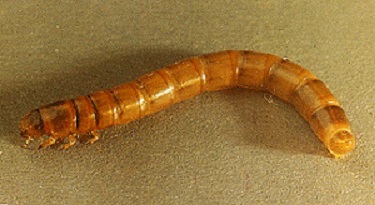
False Wireworm
The Adult false wireworm (Pterohelaeus spp) emerge from the soil during spring and early summer. Eggs are laid singly in moist soil, usually under trash or low-growing weeds. Larvae feed on decaying vegetable matter and newly germinated seeds (e.g. cereals, cotton, soybeans and sunflowers). Both the seeds and growing points are damaged, resulting in patchy stands. Larvae are up to 30 mm long, shiny and cream, yellow or tan with three pairs of legs just behind the head. They are hard-bodied, cylindrical and segmented with a rounded head. Adult beetles of Pterohelaeus spp. are 20 mm long and dark grey-black with a distinctive ‘pie-dish’ shape formed by flanges around the outline of the beetle.
